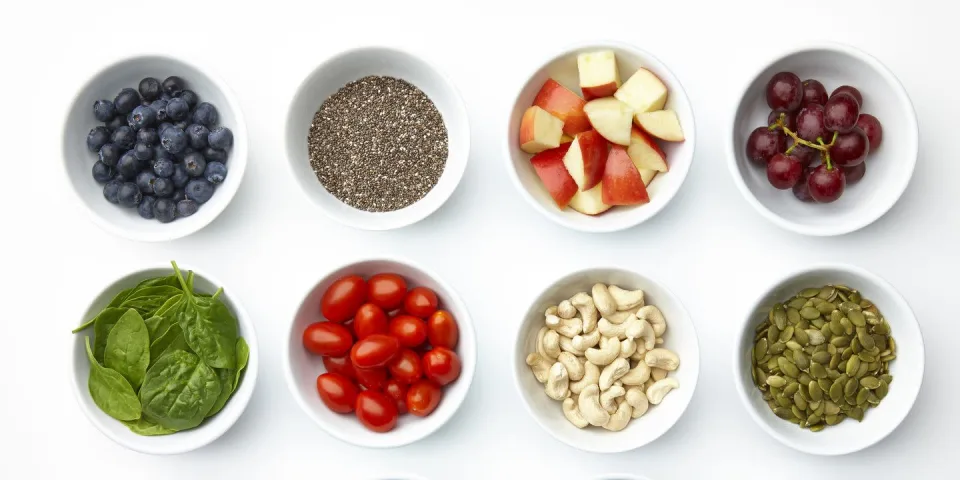Through the links below, Hearst Magazines and Yahoo may receive commission or money. On Wednesday, the Food and Drug Administration (FDA) declared that it was considering revising its definition of “healthy.” The FDA’s definition of “healthy” establishes standards for when foods may use the term on their packaging and has long been a source of controversy in the food industry.

The suggested modifications “would reconcile the meaning of the ‘healthy’ claim with current nutrition science,” the FDA claims. More than 80% of Americans aren’t consuming enough fruits, vegetables, and dairy, according to a news release from the FDA. In addition, most people consume excessive amounts of sodium, saturated fat, and added sugar. According to the FDA, the suggested modifications will work to assist people in improving their dietary habits and nutrition in order to “lower the burden of chronic disease and advance health equity.”
According to Xavier Becerra, head of the U.S. Department of Health and Human Services, “Healthy food can lessen our risk for chronic disease” (HHS). But perhaps too many individuals are unaware of what constitutes a healthy diet. The decision by the FDA will assist in educating more Americans about how to enhance health outcomes, address health inequities, and save lives.
The updated definition of “healthy” would take into account how the nutrients in various food groups contribute to the development of wholesome eating habits and the enhancement of general health. More items, such as nuts and seeds, would be included in the proposed definition of a healthy eating pattern.
fish with a higher fat, oil, and water content, such as salmon. According to Jessica Cording, M.S., R.D., author of The Little Book of Game-Changers, “it’s about time.” It has taken a while for this to happen.
KIND Snacks, which has long advocated for altering the FDA’s definition of “healthy” and launched a Citizen’s Petition in 2015, praised the decision as well. KIND’s founder and chief impact officer, Daniel Lubetzky, expressed his excitement about the FDA’s decision in a statement. “When we first petitioned the FDA in 2015, we sought to correct outdated regulations and advocate for wholesome, nutrient-dense foods, such as almonds and avocados, and we’re thrilled that these foods are finally being recognized as an important part of our diet,” he said.
It’s a little perplexing that there is disagreement about what constitutes “healthy,” but experts claim that the issue is more nuanced than many people realize. What you should know is as follows.
What falls within the newly proposed concept of health?
According to the FDA’s proposed definition, foods must fulfil the following requirements before the term “healthy” can be used on a product label:
contain a specific amount of food from at least one of the Dietary Guidelines-recommended dietary groups or subgroups, such as fruits, vegetables, and dairy. Observe strict caloric restrictions for some nutrients, such as added sugars, salt, and saturated fat. As an illustration, to qualify as “healthy,” a cereal would need to comprise 34 ounces of whole grains, 1 grime of saturated fat, 230 milligrams of salt, and 2.5 grimes of added sugars.
What dieticians believe
Nutritionists concur that this adjustment is both critical and challenging. According to Gina Keatley, a licensed dietitian nutritionist working in New York City, “the phrase ‘healthy’ is quite situational.” “What is healthy for an athlete training for a marathon or century ride will be different from what is good for an elderly person with uncontrolled diabetes and obesity.”
It is “long overdue,” according to Keri Ganz, M.S., R.D., author of The Small Change Diet, because “as it stands now, many foods with nutritional benefits—for example, heart healthy monounsaturated fats found in many foods, such as nuts, seeds, and avocado—were not deemed eligible to be called healthy.” The revised definition is “well-intentioned,” according to Cording.
“It’s a fantastic goal to encourage people to consume more fruits and vegetables, less sugar, saturated fat, and sodium,” she adds. The problematic part is that some foods may fall into one of those categories but not the others. It’s not a universal solution.
In addition, “promotes the manufacturing of foods rather than using whole foods,” according to the FDA’s definition of a nutritious food.
According to Beth Warren, R.D., owner of Beth Warren Nutrition and author of Secrets of a Kosher Girl, the phrase “healthy” is also “subjective.” In contrast to a system of universal criteria and benchmarks, she claims that it is subjective to a person’s personal perception. Healthy can be defined as having no chemicals or preservatives, being beneficial to one’s health, or being defined according to the individual.
How to eat healthfully
In general, experts emphasize that this mostly concerns a definition applied to processed—rather than whole—foods. If someone wants to eat healthier, they should only concentrate more on what they could include in their diet, such as fruits, vegetables, legumes, 100% whole grains, heart-healthy fats, and a sufficient amount of protein, leaving less time to worry about what they should limit.
According to Cording, a label is just a piece of paper. However, she advises reducing added sweets and concentrating on nutrient-dense, whole foods if you want to eat healthier. “I advise an 85/15 approach to good eating, where the bulk of foods are nutritional and meet your needs, but there is some opportunity for enjoyment,” she explains. “A label is only one element to take into account.”





























